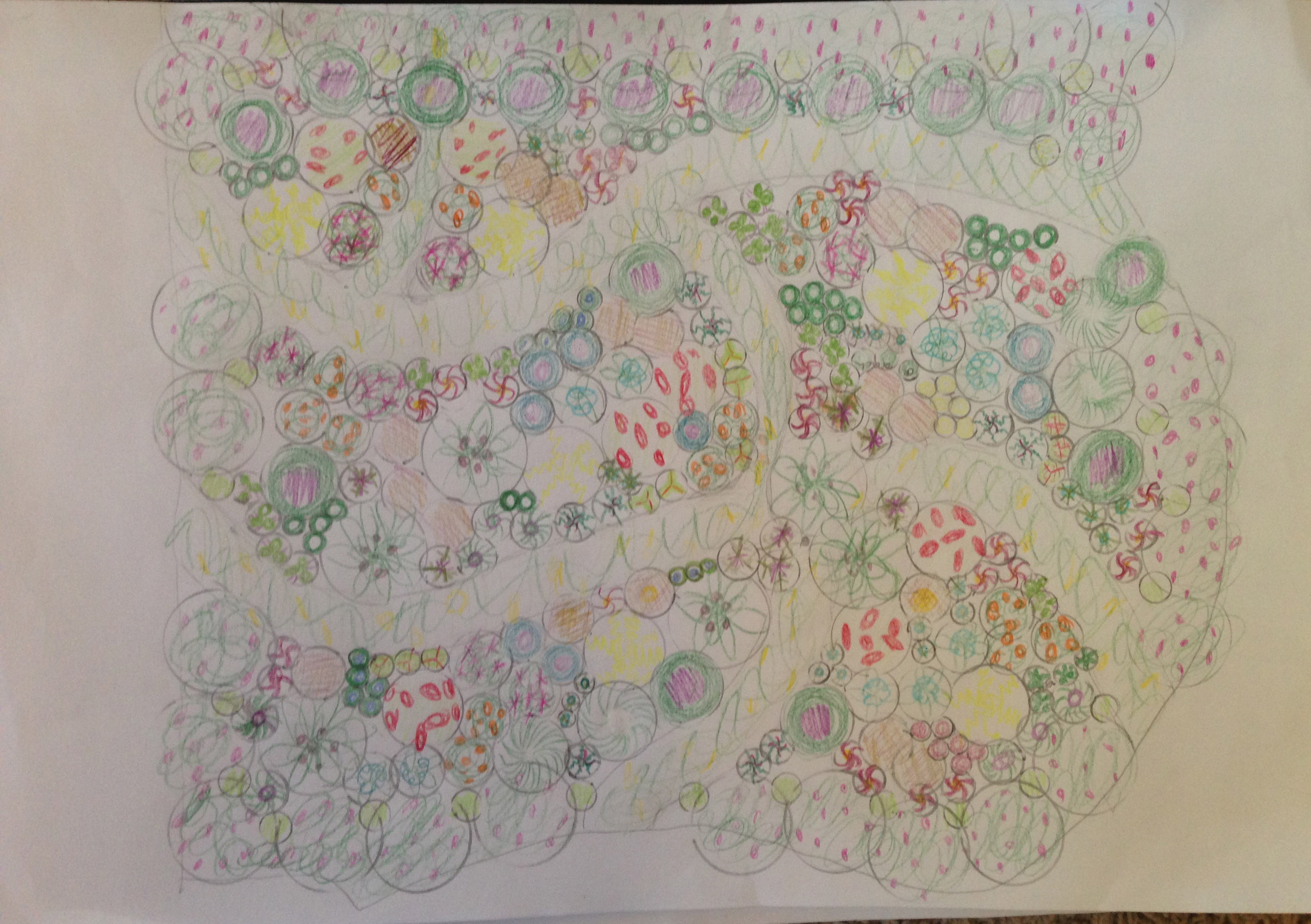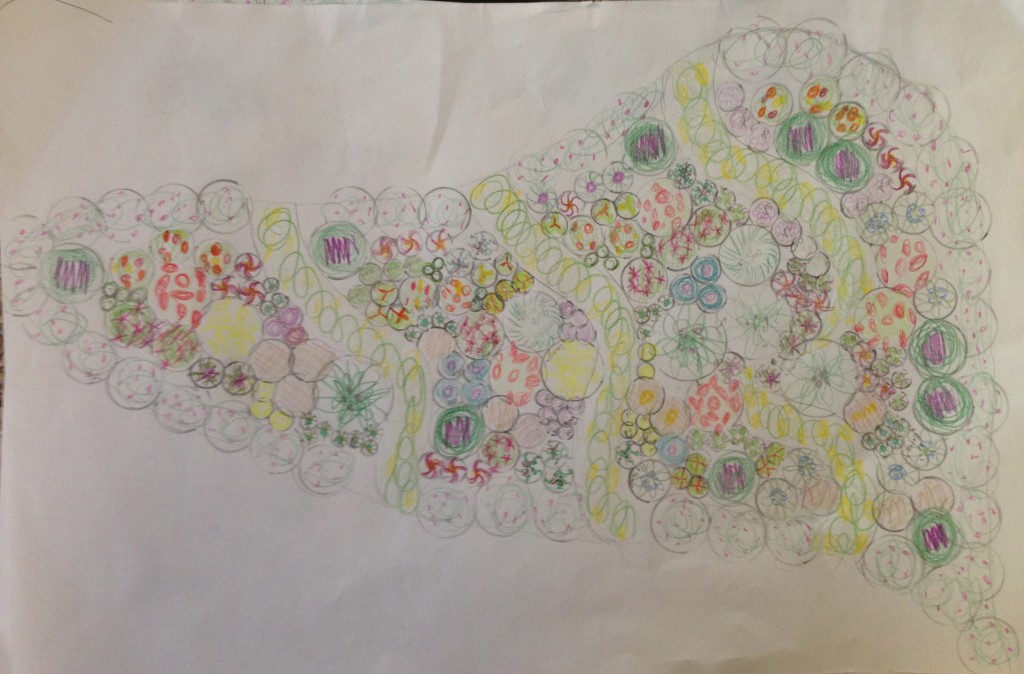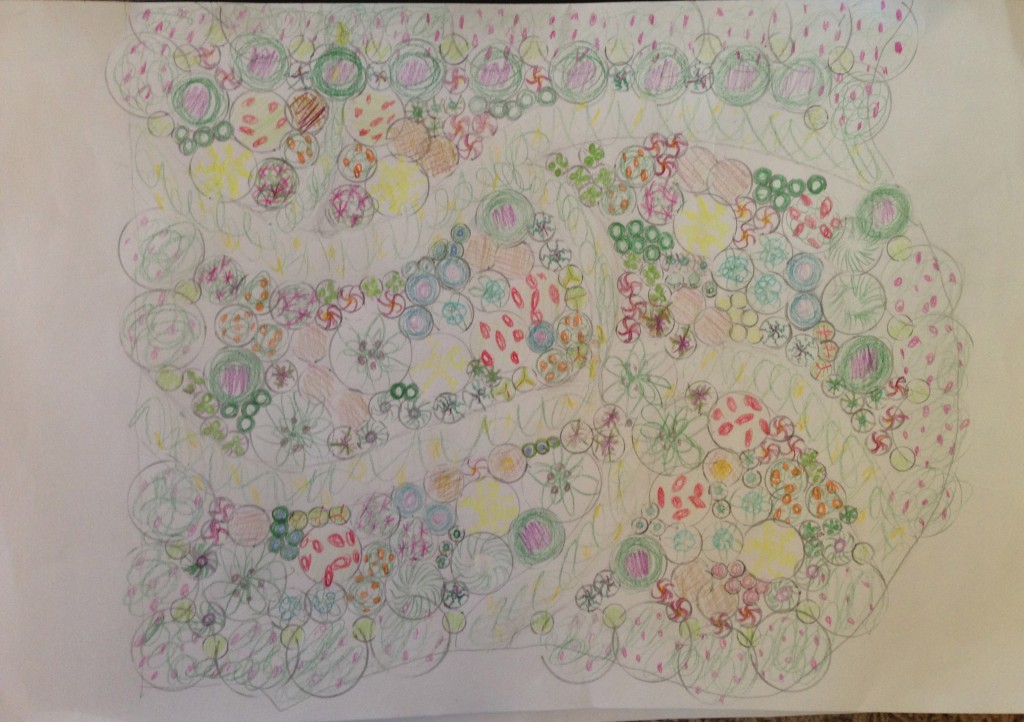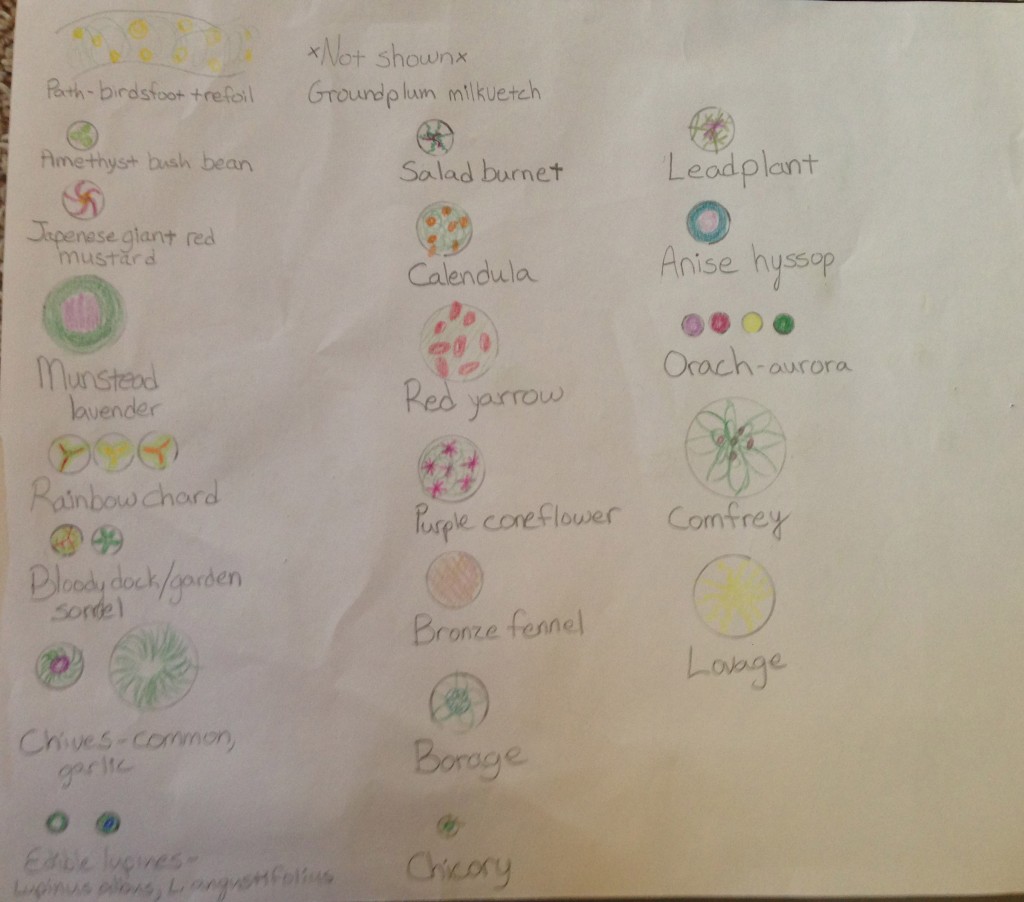While I have been reading since my last post, the bulk of that passed time was spent researching and organizing plants and designing the apple guilds I’ll be planting this spring. Permaculture design requires a lot of forethought and planning. Designing my guilds involved only a small portion of what is required in the holistic design of an entire site, but it was nonetheless a nice challenge for me. Aside from stacking functions, creating diversity, ensuring a yield, and overall creating a healthy and thriving little ecosystem, I was also concerned with beauty. For the front guilds I only chose plants that are considered beautiful by most people. My main goal is to make ecological design cool and beautiful, and what is more beautiful than a mixed border?
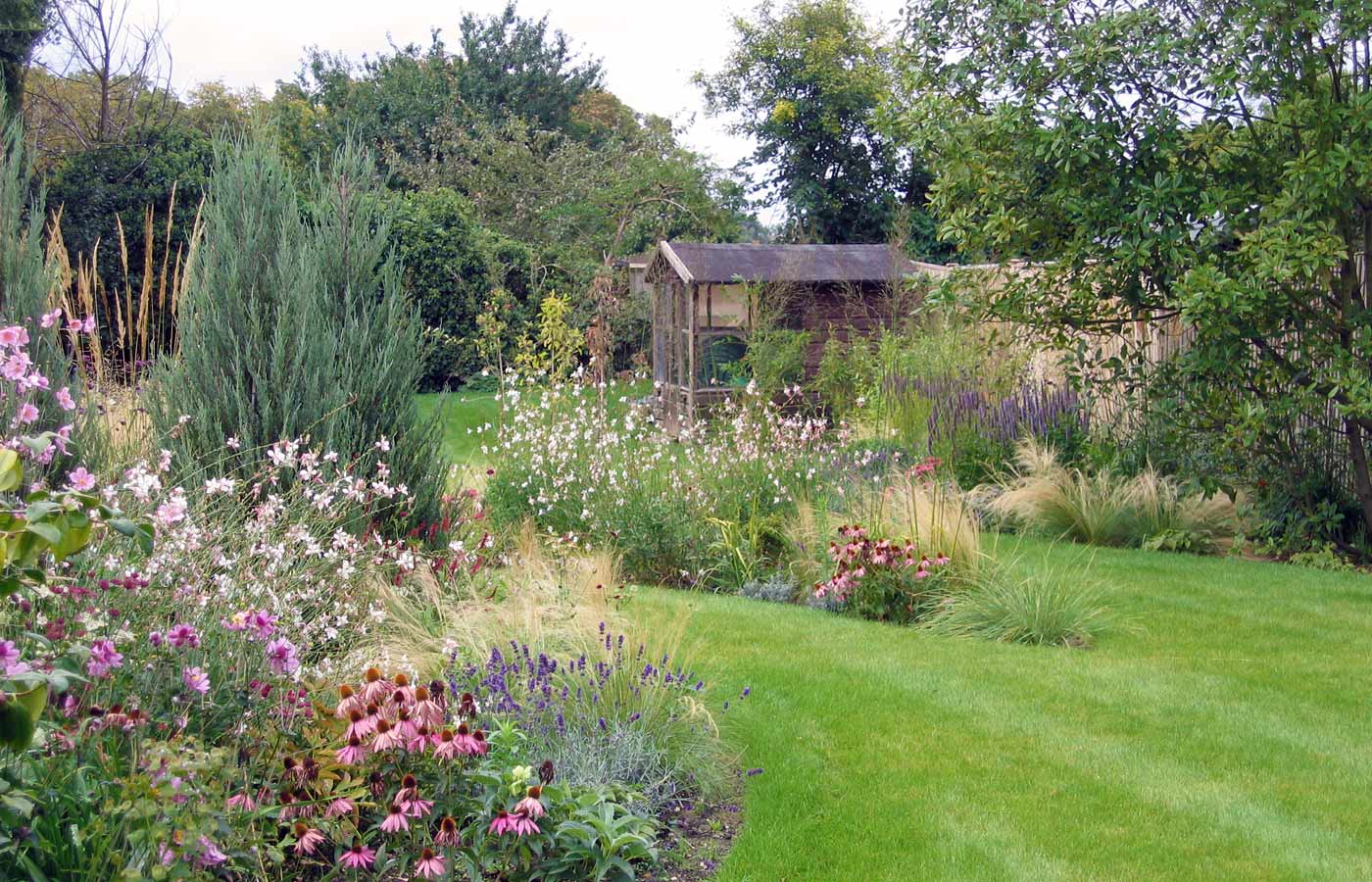
A mixed border is a traditional English garden that is highly intensive. However, it has evolved to include several styles, some of which are are more appealing. I plan to use the mixed border as an actual border in the back yard to include fruit trees and fruit and nut bearing shrubs. In the front though, I’m creating what are called island borders — “free-standing plantings surrounded by lawn” (Kingsbury, 1997). However, by the time it’s all said and done, the front yard may end up looking like an open border, which is an entire section of garden planted with perennials and shrubs to create more of a meadow look.
I’m also enthralled with cottage gardens. They’re so delicate yet hardy. They’re planned chaos. With self-seeding annuals, a cottage garden will have a new look and personality every year.
Now, you may be thinking, “What’s a guild?” A guild is basically a community of living things that support each other. In the case of the apple guild, we plant several species of plants under its mature canopy that will perform the functions necessary to help it grow, increase its output, and protect it from problems. This guild will increase fruit set by attracting pollinators, speed up the growth of my tiny trees by fixing nitrogen and accumulating nutrients, attract beneficial insects that eat herbivorous insects (the ones that want to eat my tree or apples), break up the soil around the trees allowing more efficient growth of the tree’s roots, hold back grasses that use up the same soil area as the tree’s roots (shallow depth), and keep the soil moist and cool around the tree.
The goal of my front yard design is a series of island beds with an informal cottage garden feel that require little resource input including maintenance, benefit wildlife and people, do not pollute (possibly even sequester a little carbon), support the fruit trees, provide a sufficient yield, resist deer decimation, and promote permaculture as a thing of beauty. With this goal in mind, I went about making lists of plants and their attributes, drawing information from many different sources.
I needed some plants from each of the following categories:
- Nitrogen fixers
- Nutrient accumulators
- Host plants to beneficial insects
- Host plants to rare or failing species from the animal kingdom
- Native plants
- Food plants
- Medicine plants
- Plants with driving roots that break up compacted soil
- Mulch builders
- Nectar sources
- Ground covers
- Interest plants or plants that can provide contrast with their foliage, flowers, or seed head
With few exceptions, all of the plants had to have the following attributes:
- Provide support to the apple trees
- Provide a yield to our family in the form of food, medicine, mulch, or a combination of these
- Non-invasive to the broader ecosystem in Southeast South Dakota. Some of the plants I included are aggressive in the local area (my yard and nearby areas) and will need diligent maintenance to prevent them from spreading outside the beds. However, I found that their positive qualities were worth the extra effort. These plants do not pose a threat to invasion of our wild ecosystems.
- Available in seed form
- Beautiful to most people in the area
- Deer resistant
- Not poisonous in small quantities
- Perennial or self-seeding annual
- Small enough to not visually overpower the small beds in which they will live
- Grow easily and do not require excessive amounts of resources to keep them alive. (These types of plants are better off grown in better-suited climates)
My next post will be a list of all of the included plants and their useful attributes. See the post here.
Every single plant in the front guilds will have some part that will end up going in our mouths (except for birdsfoot trefoil, the nitrogen-fixing, long-lived, foot traffic tolerant, low-growing ground cover I couldn’t pass up); neighbors with dogs and cats, take note. I’m guessing the cats will be less inclined to use the beds as a litter box once the straw is all covered. I’m also hoping that passing dogs will no longer be allowed to do both duties in the beds once they are covered in pretty plants.
Now, onto the designs. Bear with me as I am no artist.
Here is bed one. It’s hard to see where the trees are in these designs. They are indicated as small dots in pencil. The tree in this bed is in the center right portion.
Here is bed two. The tree is located near the center but to the right and bottom a bit – where four paths merge. This bed is bordered by the sidewalk at the top and by the driveway at the left. I’m nervous about the traffic on the sidewalk. If we do choose to eat the purple poppy mallow roots or use the lavender or chamomile as teas and medicines, we will be very cautious with washing.
Here is the legend. The bottom left is a bit blurry. It says “Edible lupines, Lupinus albus and L. angustifolius”.
I have realized that purple poppy mallow is missing from this legend. Purple poppy mallow is the circle with pink dots that is surrounding both beds.
I am very excited to be done with the design and to get started on planting this spring. I sheet mulched the beds last summer and fall. All my neighbors were very curious about it. I promised them all that it will be beautiful. I’m still in high hopes that my beginners luck as a designer will result in some beautiful beds. If not, well, there is always next year.
Reference:
Kingsbury, N. (1997). Design and plant a mixed border. London: Ward Lock
